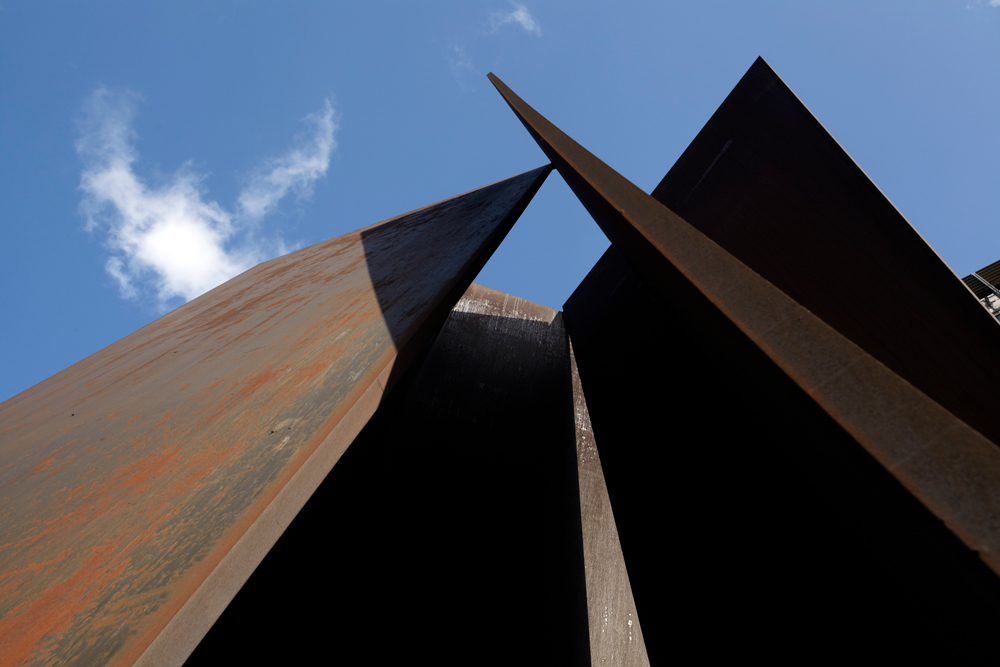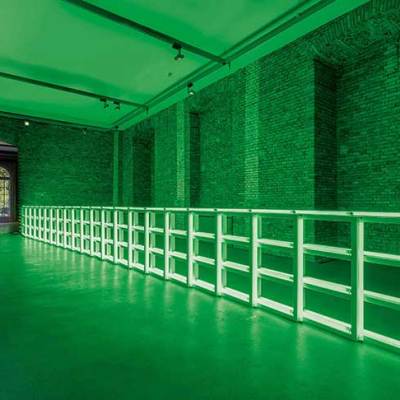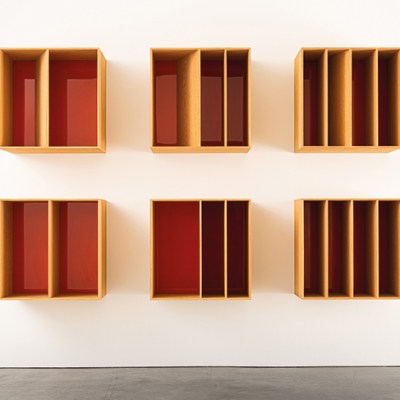 ‘Four things to see this week’ is sponsored by Bloomberg Connects, the free arts and culture app. Bloomberg Connects lets you access museums, galleries and cultural spaces around the world on demand. Download the app here to access digital guides and explore a variety of content.
‘Four things to see this week’ is sponsored by Bloomberg Connects, the free arts and culture app. Bloomberg Connects lets you access museums, galleries and cultural spaces around the world on demand. Download the app here to access digital guides and explore a variety of content.
Each week we bring you four of the most interesting objects from the world’s museums, galleries and art institutions hand-picked to mark significant moments in the calendar.
As with modernist forms of abstraction before it, the minimalist movement rejected imitation and representation as the driving force behind art – but, defining it against Abstract Expressionism, it also sought to remove all trace of the artist’s hand. Instead, its stripped-back aesthetic asks the viewer to respond to medium and form, in an attempt to leave the layered references of art history and theory outside the gallery – as Frank Stella put it, ‘What you see is what you see’. However, not all artists making geometric sculptures or monochrome paintings are necessarily aiming for minimalism and the term has become something of an albatross for many of those associated with it.
Born on 3 June 1928, Donald Judd became one of the most famous artists to be branded as a minimalist, with his brightly coloured stacks and spartan furniture earning him a place at the centre of the movement he regularly disavowed. Judd is widely revered and occasionally satirised; in the TV adaptation of Chris Kraus’s I Love Dick, Kevin Bacon’s character – the sociologist Dick Hebdige in Kraus’s original – was based on Judd. To celebrate Judd’s birthday, we take a look at a number of other artists who are associated with this complicated moment in post-war sculpture and painting.
Wall Drawing Drawing #831 (Geometric Forms) (1997), Sol LeWitt. Guggenheim Bilbao. © Sol LeWitt; courtesy Guggenheim Bilbao Museoa, 2022
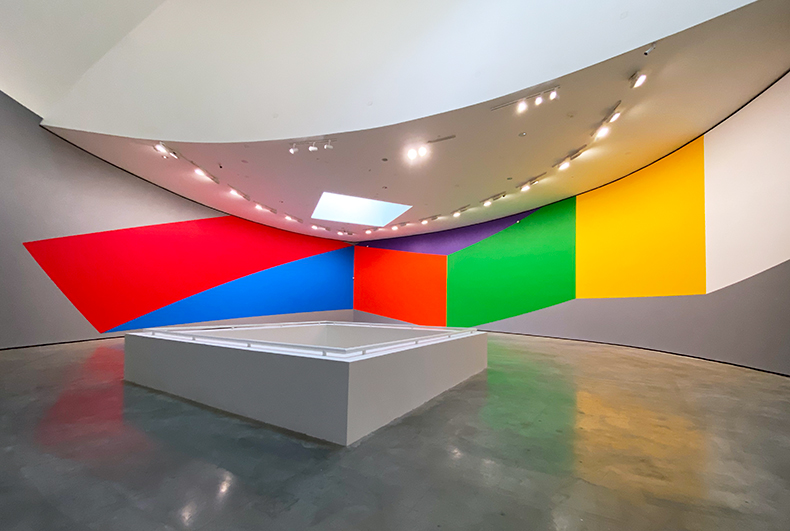
1. Wall Drawing #831 (Geometric Forms) (1997), Sol LeWitt
Guggenheim Bilbao
Sol LeWitt played a founding role both in minimalism and, from the late 1960s, the conceptual art movement that followed. This late career, site-specific commission for the Guggenheim Bilbao is one among more than 1,200 ‘wall drawings’ – the first one produced in acrylic paint – which were typically completed according to LeWitt’s instructions rather than by his own hand. The vibrant mural lends movement and warmth to a cavernous space. Click here to find out more.
Fulcrum (1987), Richard Serra. Broadgate, London; courtesy British Land
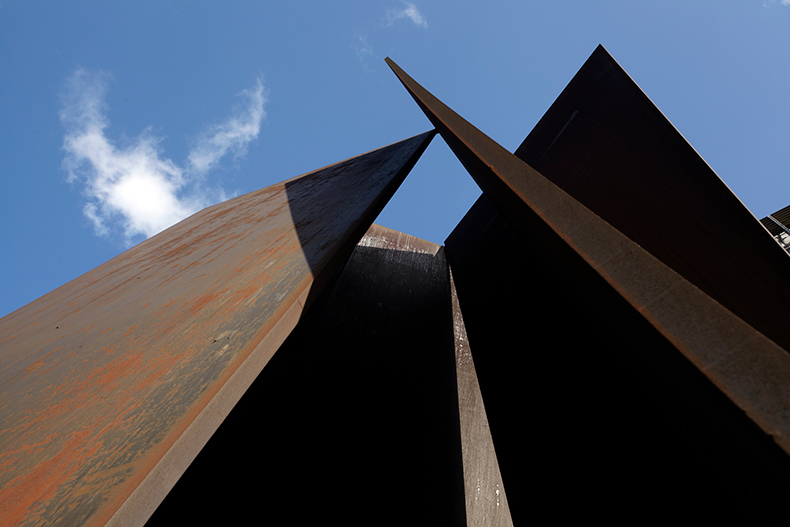
2. Fulcrum (1987), Richard Serra
Broadgate Circle, London
Located at the heart of Broadgate in the City of London, this monumental work by Richard Serra encapsulates the artist’s fascination with material and space. If sculpture is meant to be seen in the round, Serra takes this one step further, inviting the passer-by to enter the work and to feel enclosed by the large steel sheets that rise up to frame the sky. Click here to find out more.
Cross Station (1987), Keith Sonnier. Boca Raton Museum of Art. © 2023 Keith Sonnier/Artists Rights Society (ARS), New York
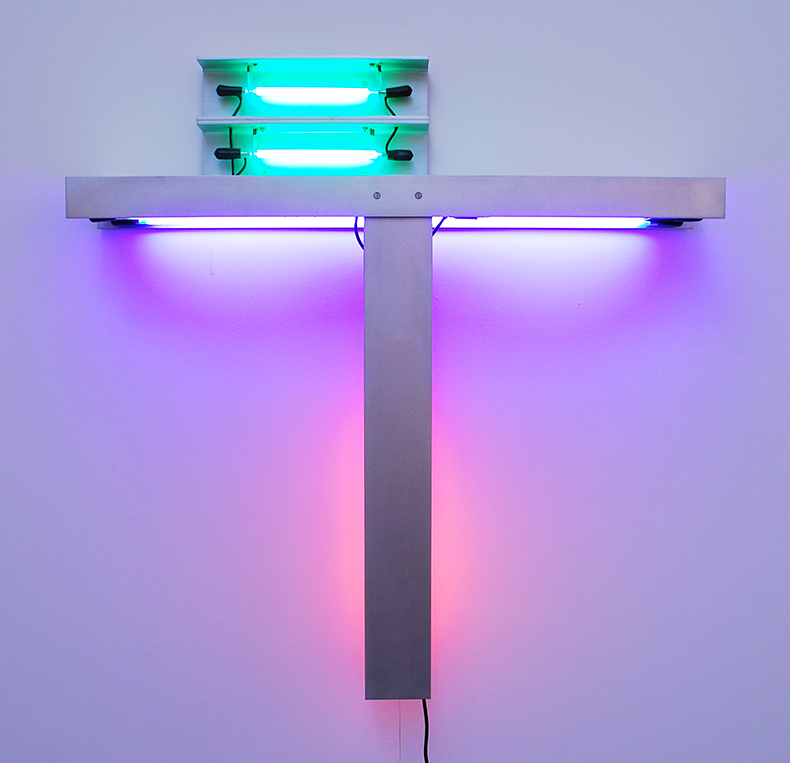
3. Cross Station (1990), Keith Sonnier
Boca Raton Museum of Art, Florida
Sonnier is sometimes referred to as a ‘post-minimalist’, with his work compared both to the Italian Arte Povera movement and to Pop art. However his roots can be seen to lie in the minimalist movement, which also influenced other artists working with neon such as Dan Flavin and Bruce Nauman. Incorporating found objects and with a playful sensibility, Sonnier’s work demonstrates an experimental attitude that colours outside the clean lines of minimalism. Click here to find out more on the Bloomberg Connects app.
Opposites of White (2006–7), Roni Horn. Kröller-Müller Museum, Otterlo. Photo: Marjon Gemmeke

4. Opposites of White (2006–07), Roni Horn
Kröller-Müller Museum, Otterlo
While many of Horn’s works seem to share an aesthetic with minimalism – as well as a preference for the floor over the plinth – the artist has actively rejected the movement’s aims. ‘In many ways,’ she says, ‘my work is a criticism of minimalism […] the attitude towards making objects as separate from human experience is not one I can participate in.’ Click here to find out more.
Download now
![]() ‘Four things to see this week’ is sponsored by Bloomberg Connects, the free arts and culture app. Bloomberg Connects lets you access museums, galleries and cultural spaces around the world on demand. Download the app here to access digital guides and explore a variety of content or scan the QR code.
‘Four things to see this week’ is sponsored by Bloomberg Connects, the free arts and culture app. Bloomberg Connects lets you access museums, galleries and cultural spaces around the world on demand. Download the app here to access digital guides and explore a variety of content or scan the QR code.
